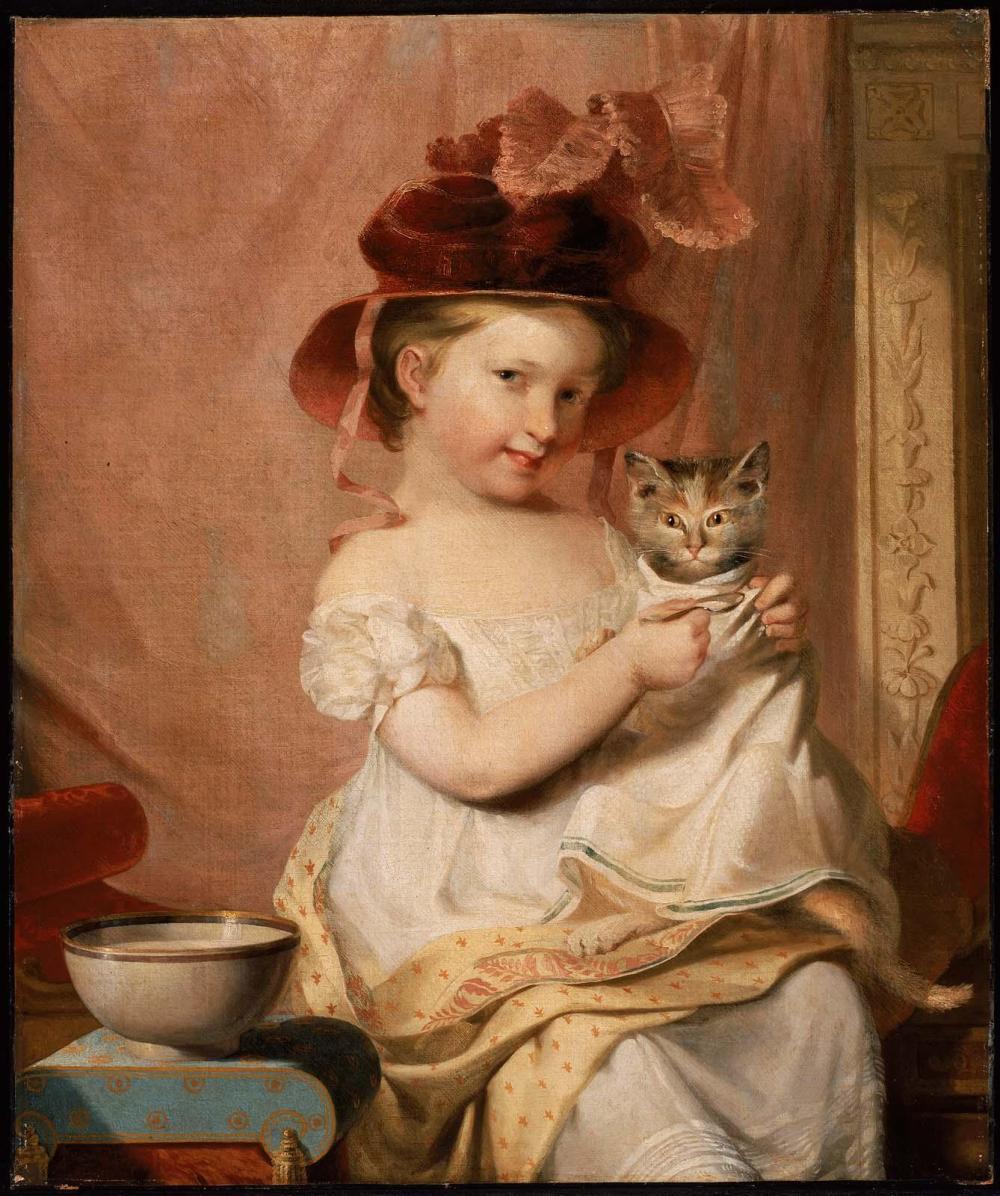Advanced Search 

Little Miss Hone
Samuel Finley Breese Morse (American, 1791–1872)
1824
Medium/Technique
Oil on canvas mounted on plywood
Dimensions
76.52 x 63.82 cm (30 1/8 x 25 1/8 in.)
Credit Line
Bequest of Martha C. Karolik for the M. and M. Karolik Collection of American Paintings, 1815-1865
Accession Number48.455
CollectionsAmericas
ClassificationsPaintings
Samuel F. B. Morse was an artist before he became an inventor. Shortly after graduating from Yale College, Morse went to England for four years of study. During the late eighteenth century in Great Britain, Thomas Gainsborough, Sir Joshua Reynolds, and others had painted numerous pictures of children in a sentimental manner. Cats were often included in pictures of little girls, and in some paintings, such as Joseph Wright of Derby’s Two Girls Decorating a Cat by Candlelight (1770, English Heritage, Kenwood House, London), the kitten’s young owners played with them as if they were babies. When, after returning to the United States, Morse was commissioned by Isaac Hone, an affluent New York auctioneer, to paint his five-year-old daughter, he remembered the art that he had seen in England and decided to show her rehearsing for her future role as a mother. Morse wrote to his wife in 1824, “I am engaged in painting the full length portrait of Mr. Hone’s little daughter a pretty little girl just as old as Susan [Morse’s daughter]. . . . I shall paint her with a cat set up in her lap like a baby, with a towel under its chin, and a cap on its head, and she employed in feeding it with a spoon.”[1]Mimicking adulthood, Mary Hone is dressed up in a fancy hat, elegant gown, and shawl. Her stylish attire and the fashionable Greek Revival furnishings of her surroundings underscore her family’s wealth.
Morse continued his successful career as a portraitist, highlighted by his commission to paint the French general Lafayette during his 1824–25 visit to the United States. He became a founder and first president of the National Academy of Design. However, Morse’s attempts at history painting, which was his real interest, were unappreciated, and in 1837 he abandoned art to pursue his electrical studies, leading to his great inventions.
Notes
1. Samuel F. B. Morse to his wife, December 6, 1824, Archives, Museum of Fine Arts, Boston.
This text was adapted from Carol Troyen and Janet L. Comey, Amerikakaigakodomo no sekai [Children in American art], exh. cat. (Nagoya, Japan: Nagoya/Boston Museum of Fine Arts, 2007).
Morse continued his successful career as a portraitist, highlighted by his commission to paint the French general Lafayette during his 1824–25 visit to the United States. He became a founder and first president of the National Academy of Design. However, Morse’s attempts at history painting, which was his real interest, were unappreciated, and in 1837 he abandoned art to pursue his electrical studies, leading to his great inventions.
Notes
1. Samuel F. B. Morse to his wife, December 6, 1824, Archives, Museum of Fine Arts, Boston.
This text was adapted from Carol Troyen and Janet L. Comey, Amerikakaigakodomo no sekai [Children in American art], exh. cat. (Nagoya, Japan: Nagoya/Boston Museum of Fine Arts, 2007).
Provenance1824, father of the sitter, Isaac Hone, New York. By 1928, John F. Braun, Merion, Pa. By 1932, Mary Louise Curtis Bok Zimbalist (first Mrs. Edward Bok, later Mrs. Efrem Zimbalist, 1876-1970), Philadelphia. 1944, sold by John Levy Galleries, New York to Maxim Karolik, Newport, R.I.; 1948, bequest of Martha C. (Mrs. Maxim) Karolik to the MFA. (Accession Date: June 3, 1948)
